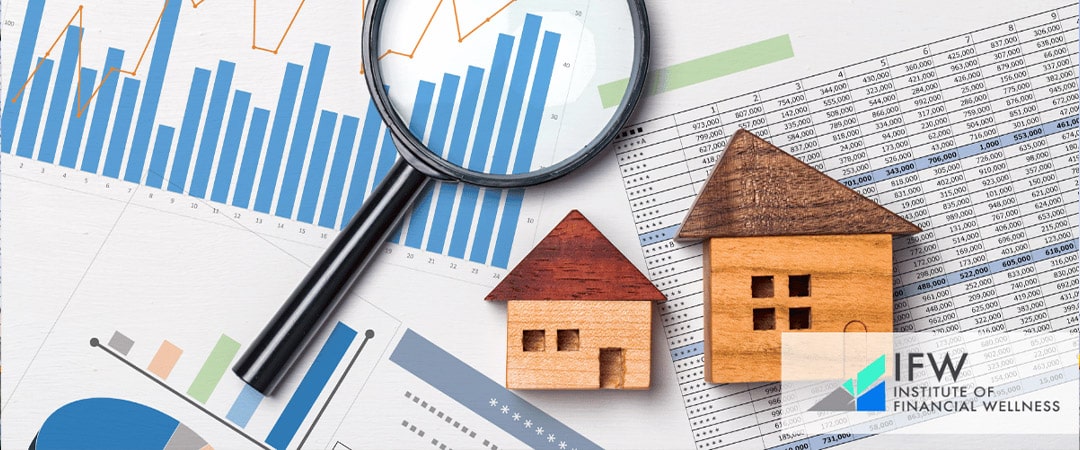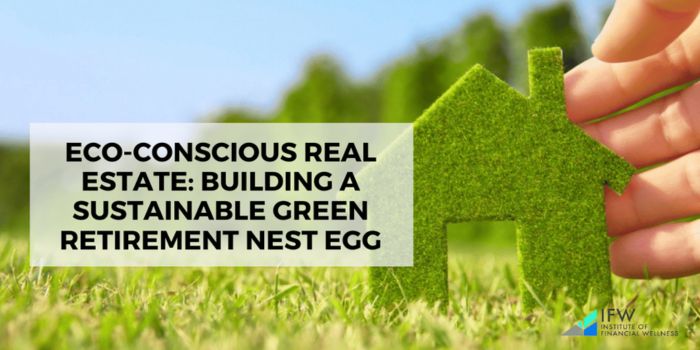“The purpose of life is to live it, to taste experience to the utmost, to reach out eagerly and without fear for newer and richer experience.” – Eleanor Roosevelt
Green retirement is more than a trend—it’s a commitment to a future where your investments also plant the seeds for a healthier planet. It’s accessible, achievable, and rewarding. If you’re looking to blend financial foresight with eco-responsibility, this article is your retirement roadmap to a great retirement score. Learn how to cultivate a retirement strategy that thrives on sustainable investments, such as eco-conscious real estate investment, and witness your retirement fund grow while championing the green revolution.
Key Takeaways
- Green retirement planning integrates ESG (environmental, social, and governance) standards into investment strategies, enabling retirees to support sustainable companies while securing their financial future.
- Investors can build a green retirement portfolio through various assets such as eco-conscious real estate investment, sustainable stocks, green bonds, environmentally focused ETFs, and the inclusion of green funds in their 401(k)s, facilitated by knowledgeable financial advisors and tax incentives.
- The green retirement movement is not just about financial gains; it’s about fostering a sustainable legacy. An increasing number of retirees are investing in sustainable real estate and embracing lifestyles and communities that prioritize eco-friendly practices.
World Environment Day: A Global Call to Action for a Sustainable Future
World Environment Day, celebrated annually on June 5th, is a global initiative led by the United Nations to promote awareness and action for the protection of our environment. Established in 1974, this day serves as a platform for raising global consciousness on critical environmental issues such as pollution, biodiversity conservation, and climate change. Each year, World Environment Day is hosted by a different country and centers around a specific theme, which focuses on efforts and highlights pressing environmental challenges. For instance, themes have ranged from combating plastic pollution to promoting ecosystem restoration, encouraging both individual and collective actions to foster a healthier planet.
The significance of World Environment Day extends beyond mere awareness; it galvanizes millions of people worldwide to engage in activities that contribute to environmental preservation. Governments, non-profit organizations, businesses, and communities participate in events such as tree planting, clean-up campaigns, and educational workshops. The day also serves as a call to action for policymakers to implement sustainable practices and enforce environmental regulations. By uniting people across the globe, World Environment Day underscores the shared responsibility of protecting our planet, inspiring continuous efforts toward a sustainable and resilient future [1].
The Rise of Green Retirement

When one retires, the pursuit of sustainable living doesn’t come to a halt. The idea of a green retirement is quickly becoming more popular as numerous people strive to ensure that their retirement investments reflect their commitment to environmental principles. Retirees are reinforcing the stability of their financial future while simultaneously advancing the sustainability of our planet by backing companies dedicated to eco-friendly practices.
The integration of monetary wisdom with environmentally responsible investment defines green retirement planning—a strategy transforming how we approach preparing for retirement in ways that benefit both individuals and the environment.
The Concept of Green Retirement
The ESG framework, representing environmental, social, and governance criteria, is foundational to the concept of green retirement. Investment strategies under this approach prioritize not only financial viability but also commitment to environmental stewardship, social responsibility, and ethical leadership within companies. Portfolios aligned with green retirement principles typically feature stocks from enterprises leading in renewable energy initiatives, sustainable design practices, and waste minimization efforts. They may also include green bonds specifically purposed for directing investments towards effective climate solutions.
This investment philosophy adopts a forward-thinking stance when assembling a portfolio for retirement purposes by weighing both potential economic gains against the consequential footprint on Earth’s ecology over time.
Why Green Retirement Matters
Retirement planning is being reshaped by the escalating call for sustainability and the acknowledgment of climate change as a significant economic risk. Investors are progressively factoring in environmental, social, and governance (ESG) considerations into their strategies for retirement, recognizing that companies have both the influence and the obligation to promote beneficial environmental transformations.
As retirees invest in green projects, they do more than protect their own financial future—they also support a mission with enduring impacts. This commitment contributes to establishing an ongoing legacy of sustainability that will benefit future generations.
The Benefits of Investing in Eco-Conscious Real Estate Projects for a Green Retirement

Investing in eco-conscious real estate projects offers a unique blend of financial returns and positive environmental impact. As awareness of climate change grows, so does the interest in sustainable development and green retirement planning. This approach not only addresses the urgent need for climate solutions but also provides investors with long-term benefits.
Sustainable Real Estate
Sustainable real estate focuses on minimizing environmental impact through energy efficiency, sustainable design, and the use of renewable energy [1]. These properties often incorporate technologies that reduce energy consumption and emissions, thereby addressing the challenges of climate change. Investing in such projects can lead to substantial long-term returns due to the growing demand for environmentally friendly buildings.
ESG Funds and Green Retirement
Environmental, Social, and Governance (ESG) funds are a popular choice for investors looking to support sustainable development. These funds prioritize investments in companies that meet strict environmental and social criteria, including those involved in sustainable real estate projects. Incorporating ESG funds into retirement planning, such as a 401(k), ensures that investments contribute to a green retirement while potentially yielding strong financial returns.
Financial Incentives and Market Growth
Tax Incentives and Government Support
Governments worldwide offer tax incentives to promote investments in eco-conscious projects. These incentives can significantly enhance the financial attractiveness of sustainable real estate, reducing the initial capital outlay and improving long-term profitability. For example, tax breaks for energy-efficient buildings and renewable energy installations can increase the net returns on such investments.
Investing in green initiatives not only benefits the environment but can also be financially advantageous due to various tax incentives. Among them are:
- The Investment Tax Credit
- The Production Tax Credit
- Manufacturing credits for energy products
- Residential clean energy credits
These financial perks make allocating funds to the green economy and projects focusing on energy efficiency attractive.
When investors take advantage of these tax incentives, they gain the twin advantages of fostering climate solutions and bolstering their investment portfolios while remaining mindful of how their investments affect the climate.
Growing Demand and Market Dynamics
The market for sustainable real estate is expanding rapidly as consumers and companies prioritize environmental responsibility. This growing demand translates into higher property values and rental yields for sustainable buildings. Investors who focus on these projects can benefit from the premium that tenants and buyers are willing to pay for eco-friendly properties, thereby enhancing their investment portfolios.
Environmental and Social Impact
Investing in eco-conscious real estate projects contributes to the reduction of fossil fuel dependency and carbon emissions. These projects often utilize renewable energy sources, efficient waste management systems, and sustainable building materials, which collectively reduce their climate impact. By supporting such initiatives, investors play a crucial role in mitigating climate change and promoting environmental health.
Social Responsibility and Governance
Companies involved in sustainable real estate projects often emphasize strong governance and social responsibility. These businesses typically engage in practices that support the well-being of their employees, communities, and the environment. Investors can align their money with their values by choosing projects that prioritize diversity, transparency, and ethical management practices, thereby fostering a positive social impact.
Strategic Considerations for Investors
Incorporating sustainable real estate into investment portfolios provides diversification benefits, as these assets often exhibit different risk and return characteristics compared to traditional securities like stocks and bonds. This diversification can reduce overall portfolio risk and enhance long-term returns.
Risk Management and Assessment
Investing in eco-conscious projects requires careful assessment of various risk factors, including market conditions, regulatory changes, and technological advancements. Advisors and investment managers specializing in ESG criteria can provide valuable insights and strategies to mitigate these risks, ensuring that investments are well-positioned to capitalize on the growing green market.
Crafting Your Green Retirement Portfolio

Creating a retirement portfolio that is as forward-thinking as it is influential involves a varied mix of investments, which include green bonds dedicated to financing environmental initiatives and mutual funds backing companies committed to sustainable practices. Building this type of investment portfolio transcends the act of investing—it’s about constructing an economic network that actively drives progress in sustainable development.
Every component within your environmentally focused retirement fund—from renewable energy funds and water infrastructure investments to stocks in eco-conscious businesses—serves an essential purpose. They collectively advance your personal sustainability objectives while simultaneously decreasing your dependence on fossil fuels.
Selecting Sustainable Stocks and Bonds
Crafting a sustainable portfolio necessitates the careful selection of appropriate stocks and bonds. Among the diverse choices available to investors are:
- Enterprises leading in renewable energy innovation
- Firms that excel at resource management
- Businesses focused on green transportation solutions
- Organizations offering recycling services
Investors who direct their funds towards companies with high ESG ratings not only bolster sustainability efforts and generate a positive impact but might also enjoy increased profits and reduced risks.
The appeal of green bonds is magnified by support from carbon collectives and tax incentives, positioning them as an especially attractive component for any investor’s sustainable portfolio.
Including Green Funds in Your 401(k)
Renewable energy and water resources-focused ETFs are increasingly being incorporated into 401(k) plans as part of retirement planning strategies. Expertise is essential in navigating these green investment options, and financial advisors play a crucial role in steering clients toward investments that match their ethical preferences.
The core of this approach lies in purposeful investing to ensure that one’s commitment to environmental responsibility is mirrored in their retirement funds.
Balancing Risk and Sustainability

Navigating the intricate relationship between risk management and sustainability is critical for a more environmentally friendly tomorrow. Investors are tasked with weighing the risks associated with green companies, which may be in their nascent stages of development, against the possibility of sustainable profits over time. High rewards often accompany this challenge since companies that rank favorably on environmental, social, and governance (ESG) criteria tend to show reduced volatility along with a robust equilibrium between risk and return.
Retirees looking to ensure financial stability while upholding their dedication to environmental stewardship can achieve equilibrium by wisely evaluating companies’ environmental policies and spreading out their investments across different areas. This approach allows them to support sustainable development without compromising on economic security.
Assessing Company Environmental Policies
Investors must thoroughly examine a company’s environmental practices, assessing ESG scores and ratings as well as fund managers’ strategies to verify that these organizations truly practice sustainable methods. This evaluation transcends simple numerical analysis. It involves aligning one’s investment portfolio with personal environmental values and backing businesses that uphold a commitment to fostering a sustainable world.
Diversification in Green Investing
Green investing embraces the investment world’s cardinal rule of diversification, providing a bulwark against risk while aligning with environmental values. Diversifying one’s portfolio with various sustainable assets enables investors to support sustainability and simultaneously minimize exposure to potential losses. This can be achieved through:
- Committing capital to mutual funds and ETFs concentrated on eco-friendly companies and sectors [3]
- Allocating investments toward individual securities of enterprises engaged in green practices
- Subscribing to green bonds or other environmentally-focused fixed-income instruments
- Channeling resources into projects that advance renewable energy use or related infrastructure
- Directing investments towards real estate development with a strong emphasis on sustainability or properties built according to “green” standards
Funds that integrate Environmental, Social, and Governance (ESG) considerations provide an avenue for engaging with multiple industries and geographical areas, including those involved in supply chains. Such ESG-centric funds create well-rounded portfolios reflecting the complex dimensions associated with embracing comprehensive sustainability measures.
The Role of Advisors in Green Retirement Planning
Financial advisors serve as the essential navigation tool for those seeking a green retirement. Their expertise allows them to:
- Steer retirees through the complexities of sustainable investments
- Coordinate retiree’s financial plans with their environmental ethics
- Enhance sources of income so that retirees’ contributions bolster their intended effect.
The aim is to create withdrawal strategies that uphold sustainability, balancing both fiscal stability and dedication to environmental stewardship.
Finding the Right Advisor
When pursuing green retirement planning, selecting the correct advisor is essential. Seek out qualifications like the Chartered SRI Counselor designation that signifies an advisor’s proficiency in socially responsible investing. Their dedication to sustainable investment strategies along with their obligation as a fiduciary and their full range of financial services will form the foundation for your well-informed investment choices regarding retirement.
IFW: Pioneering Eco-Friendly Financial Education for a Secure Retirement
The Institute of Financial Wellness (IFW) leads in providing financial education, specifically catering to those interested in eco-conscious real estate projects as part of their retirement planning. IFW provides retirees with engaging educational materials, access to expert financial advisors, and personalized strategies designed to help them reach a financially secure and eco-conscious retirement, such as the retirement score calculator that helps people understand where they are in regard to their retirement goals. This enables individuals pursuing retirement to ‘Get There’ with the assurance of both fiscal health and environmental integrity.
Full Summary
Green retirement is an innovative retirement planning strategy that integrates ESG funds and sustainable investments to create a positive impact on both financial futures and the environment. By investing in sustainable real estate, renewable energy, and companies focused on sustainable development, investors can reduce their climate impact and reliance on fossil fuels while supporting businesses that prioritize energy efficiency, sustainable design, and responsible governance. Tax incentives and growing market demand for eco-friendly properties enhance the attractiveness of these investments. Financial advisors guide clients in building diversified, environmentally friendly portfolios that align with their values and goals, addressing climate change and promoting sustainability across supply chains. This holistic approach not only fosters financial security but also champions climate solutions and sustainable progress for future generations.
Frequently Asked Questions
What exactly is green retirement?
Retirement investing with an environmental focus entails putting funds into sustainable companies and initiatives, ensuring your nest egg supports green efforts while contributing positively to the Earth’s well-being.
Why is it important to consider green investments for my retirement portfolio?
Incorporating sustainable investments into your retirement portfolio is crucial, as they resonate with the escalating sustainability and climate change issues. These green investments foster not only ethical business operations but also promise consistent fiscal benefits.
Such an approach contributes to creating a more sustainable future for all individuals involved.
Can I include green funds in my 401(k) plan?
Certainly, you can integrate green funds by opting for ETFs focused on renewable energy and water resources within your 401(k) plan. It is advisable to consult with a financial advisor to confirm that these choices are in harmony with your environmental principles.
What tax incentives are available for green investments?
Investors have the opportunity to capitalize on a range of tax incentives tailored toward green investments. This includes perks like the Investment Tax Credit aimed at solar projects, along with the Production Tax Credit for wind energy ventures. To credits designed for clean energy production and home-based energy efficiency.
Such incentives serve to amplify the value of investments made in environmentally friendly initiatives.
How can I ensure the advisor I choose is right for my green retirement planning?
When selecting an advisor for your green retirement planning, verify that they hold qualifications in socially responsible investing, like the Chartered SRI Counselor designation. Confirm their sincere commitment to sustainability and fiduciary duty to prioritize your interests, as well as their offering of extensive financial services tailored to assist you in achieving your objectives.




